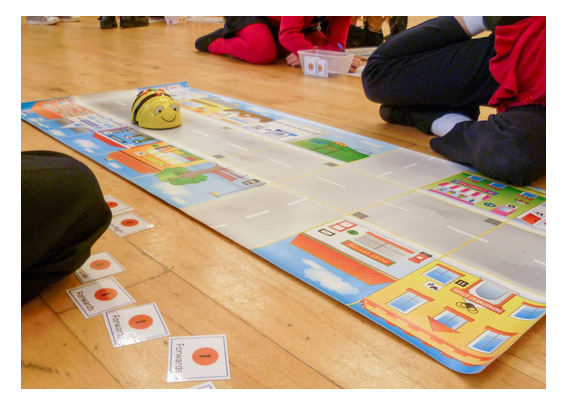3 - 5 years
Children can start to develop their evaluation skills as they articulate their judgements and reasons in simple terms, such as “My dog is my favourite pet because she lets me pat her.”
They’re also learning to use logical reasoning to make these judgements.
In class, they might think about different ways to find out things. They can find out about dinosaurs by reading a text, browsing a picture book, using a CD ROM or entering keywords into a search engine. Do they think there’s a ‘best’ way?
The EYFS Profile Handbook suggests that, in expressive arts and in design, pupils should explain the features of their own and others’ work, recognising the differences and relative strengths – a great introduction to evaluation.
5 - 7 years
At this stage, pupils can undertake many different computing activities which include simple evaluation. They can be introduced to the idea of design goals and criteria and may begin to create their own.
Designing algorithms for a Bee-Bot moving between two points, they can evaluate the most effective route, for example the shortest. They can have criteria for designing a Bee-Bot maze – a start, an end, a minimum number of obstacles – and for the Bee-Bot itself: they might want it to navigate the maze without striking anything. Pupils can refer to the design criteria and judge if they’ve been met.

Pupils aged 5 - 7 program a Bee-Bot to visit four houses on a floormat of a street. They can evaluate how well their algorithm has worked.
7 - 11 years
Pupils begin to understand the importance of evaluation in improving work, and they take more responsibility for it. With increasing confidence and independence, they use more-detailed design goals and criteria and become more comfortable in drawing up their own. They become more skilled in giving and absorbing appropriate feedback.
When creating an animation about the Vikings, pupils can evaluate their work at different stages:
Research
What Viking topics could be included? What software is available? Is the planned animation achievable in the time available?
Algorithms
Are the algorithms fully decomposed, precise and complete sequences? Are they the most efficient possible, making use of repetition and
selection if appropriate?
Final animation evaluation
Does the final animation meet the initial design criteria? Does it run as expected? Does it meet the standards of what might be considered ‘good’ animation?
Final evaluation of approach and learning
What does this project teach us that’s useful for future ones? What could be done differently next time?